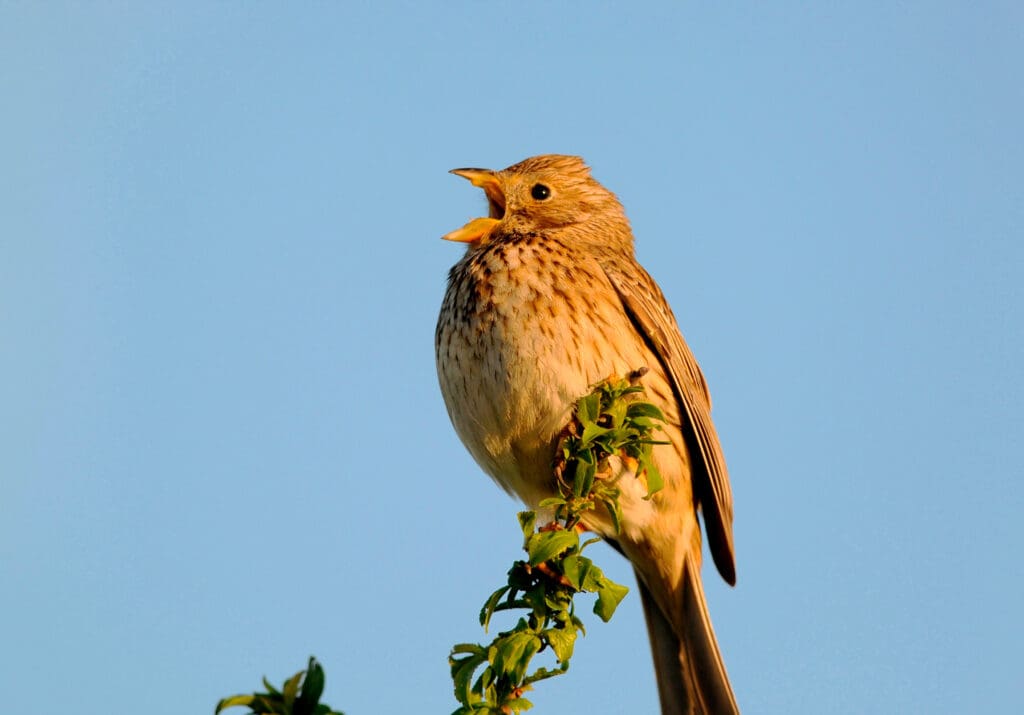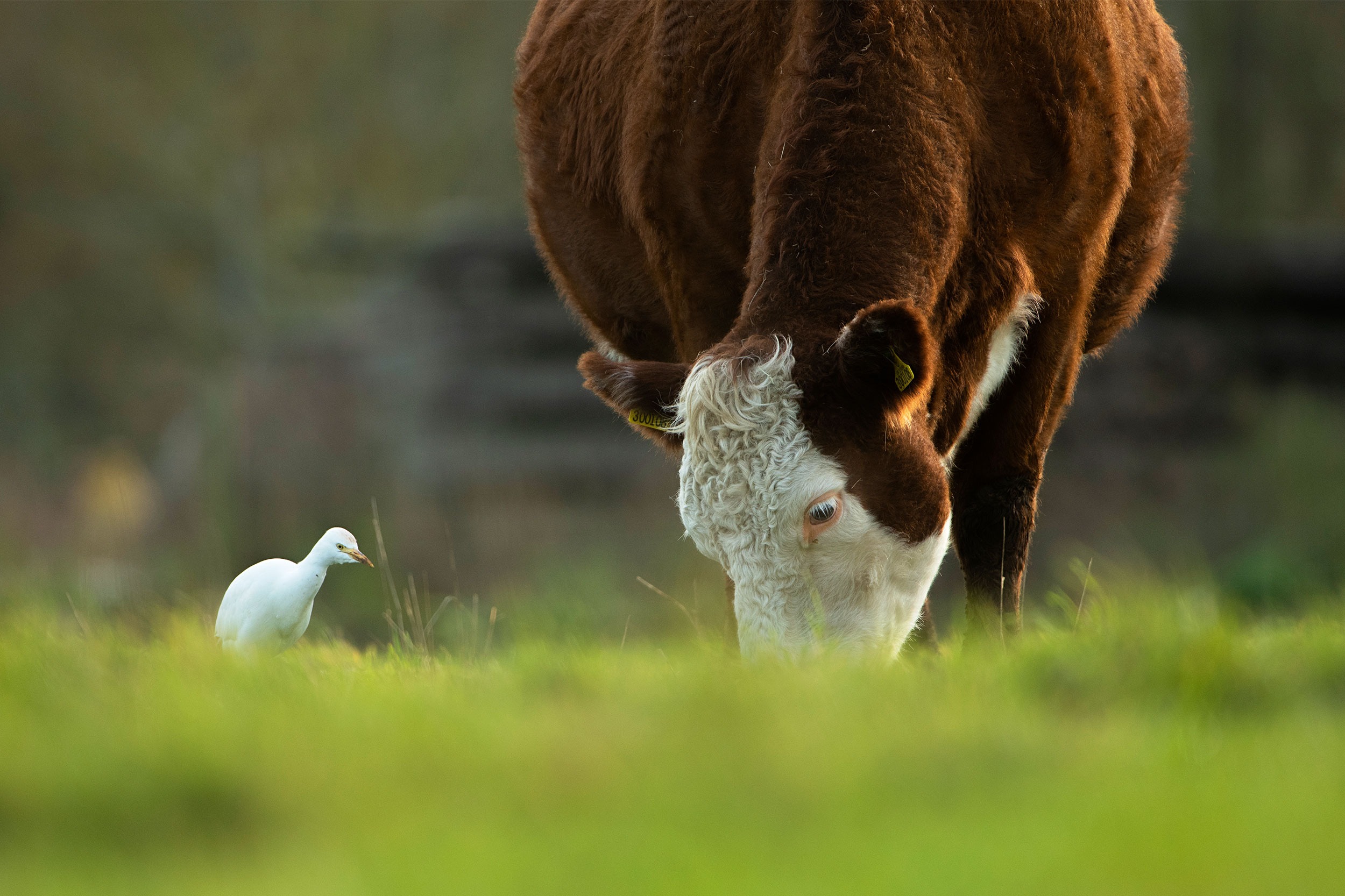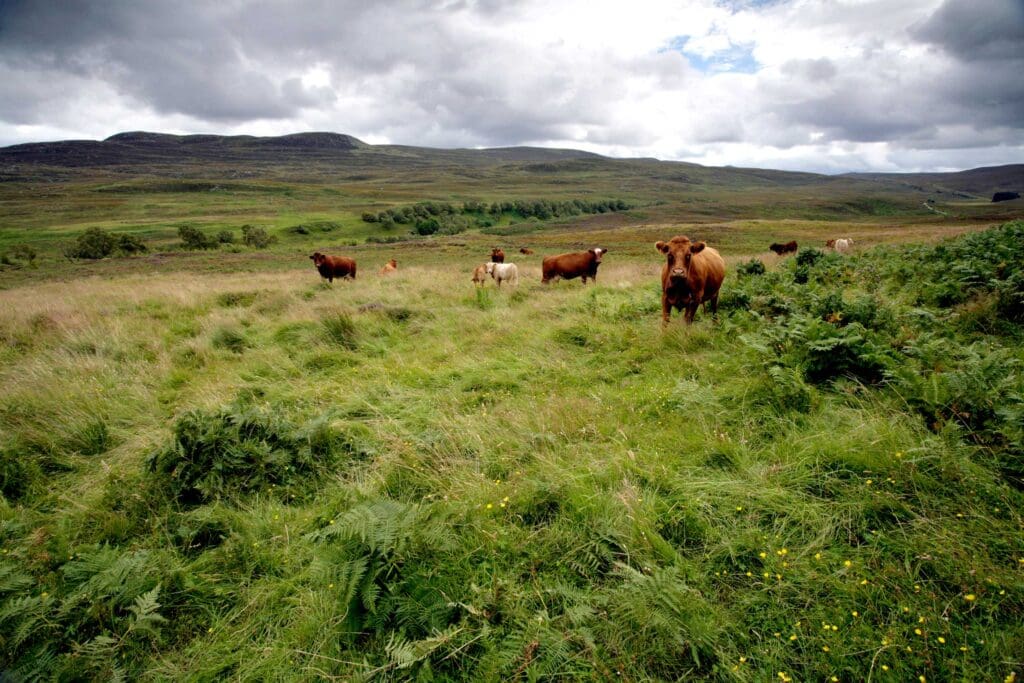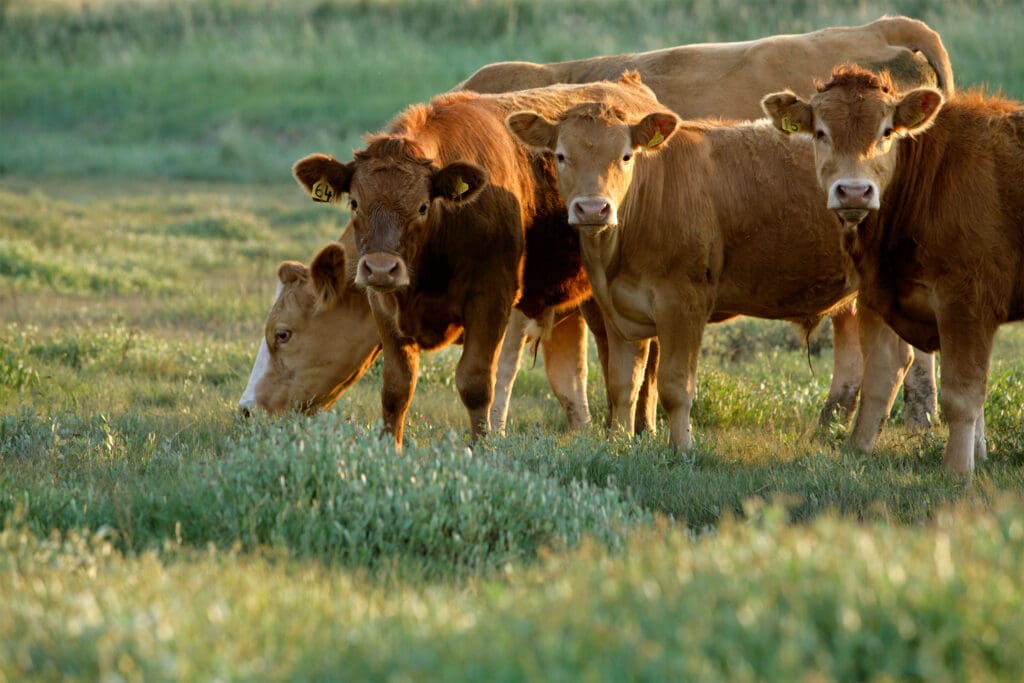Thank you, cows.
I say this not only on my own behalf, but also on behalf of orchids, Flag Irises, deer, Hemp-agrimony, rushes, sedges, Elephant Hawk-moths, gnats, bees, spiders, hoverflies, Red Admirals, Painted Ladies, Grass Snakes, Short-tailed Field Voles, Jackdaws, hares, Barn Owls, Buzzards and Marsh Harriers.
Cows have many immense talents, but the greatest of these is eating. For 10 days, I saw 32 cows express this talent to the very limits of their ability and, as a result, all those living things already mentioned – and an awful lot more – have reason to thank them.
I rent a dozen acres in the Broads and manage them for wildlife. The most important management tool is cows. It’s their munching that makes this low, wet land so rich. They are tireless workers for conservation and, as I walk these scant acres, I send thanks for a good job well done.
What would happen if the cows didn’t come by every year? The land would change. The vegetation would get higher. Brambles and scrubby plants would move in. In time, there would be trees. Soon enough it would become a wood, drying the land out and changing its nature. And the Marsh Harriers would have to go somewhere else to hunt.
Interested in habitat management? Learn how reedbeds are managed for nature.
What if the cows were there all spring and all summer? They would graze the vegetation down very low, and that would decrease the number of plant species and take away all the places where animal species live and hide. Ten days is perfect.
I was brought up a townie and I used to think, without ever actually putting my mind to it, that a wood was a wood because it was a wood and that a grazing meadow was grassy because of the grass, and they would remain as they were for ever after. Not so.
We think a landscape is timeless and still, for we look with hurrying human eyes. The truth is that every landscape is a dynamic thing, forever in motion, forever changing. It’s called the ecological succession: if the deer weren’t grazing Richmond Park, it would become a closed canopy oakwood. In such a wood, when a tree falls and creates a clearing, the deer keep it open and create a nice sward.
‘Some land thrives on neglect, what conservationists call minimum intervention. But if you want the richness of, say, a wetland meadow, you need grazers to keep it’
Landscapes are growing, living, breathing things. They are subject to perpetual change, because change is life. When you mow the lawn or weed the borders you are fighting the ecological succession – taking control, imposing your own preferences. A farmer does the same thing with a thousand-acre wheatfield. So do the cows near my place.
Animals that eat plants play a major role in this succession, and large grazing mammals do it in the biggest possible way. Some land thrives on neglect, what conservationists call ‘minimum intervention’. But if you want the richness of, say, a wetland meadow, you need grazers to keep it.
Inspired? Learn how others have taken on land and made their own nature reserves.
In pre-human times this was done by the now-extinct cattle called Auroch, plural Aurochsen. In modern times, the right level of grazing still creates and maintains wild places and allows thousands of species to thrive. By doing a favour to butterflies and Marsh Harriers, the cows have enriched the landscape and done great good for humans at the same time. Well played, cows!
You might also like
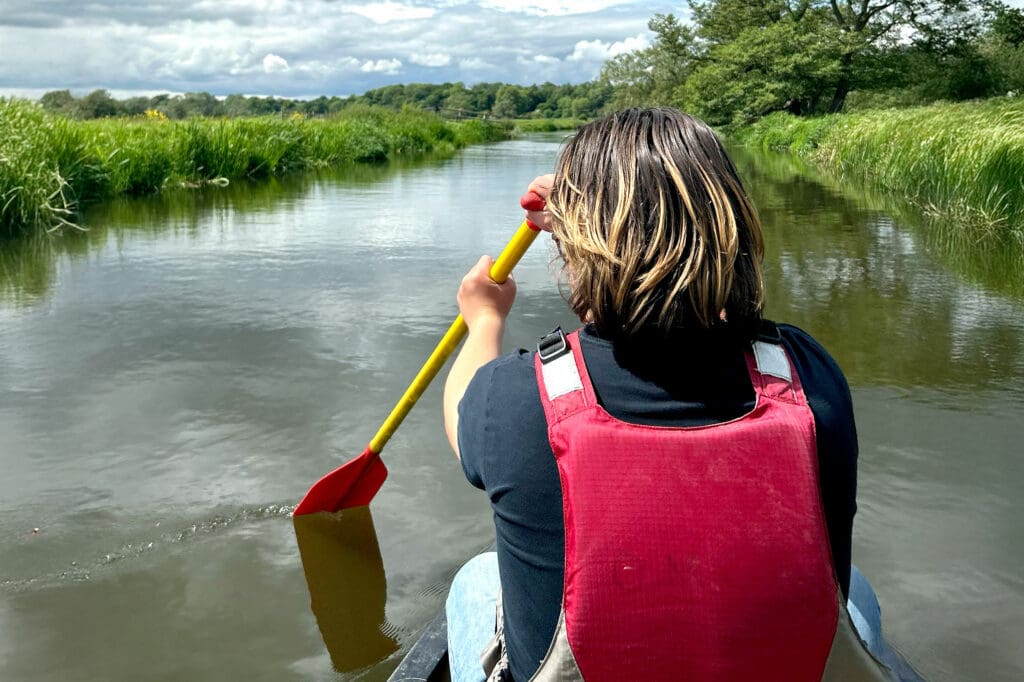
Watching wildlife from the water
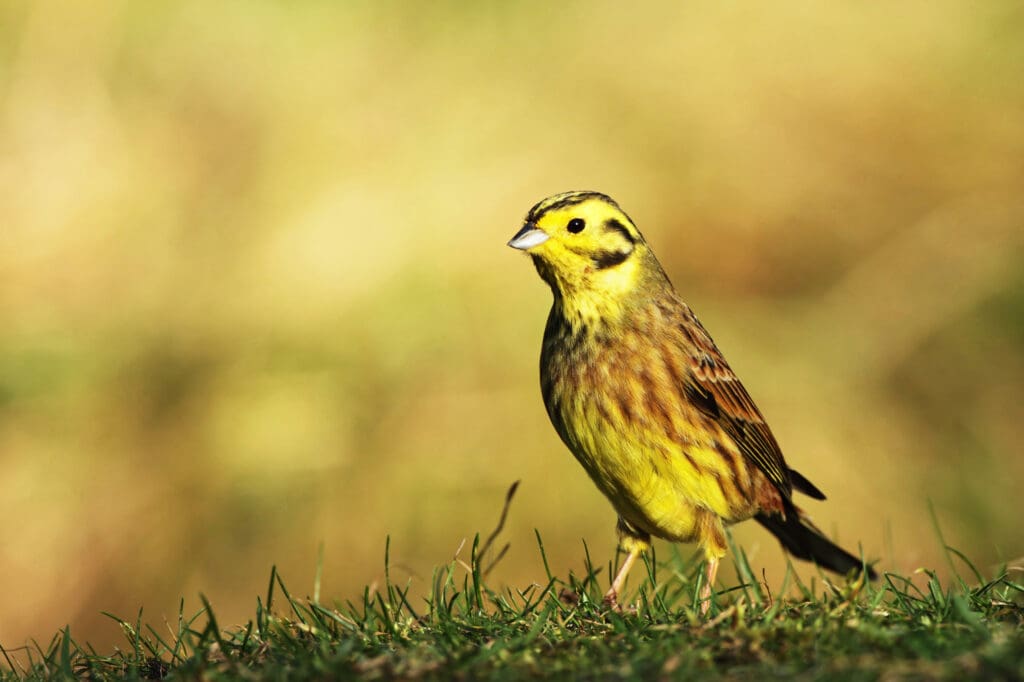
The secrets of weedy stubble fields
